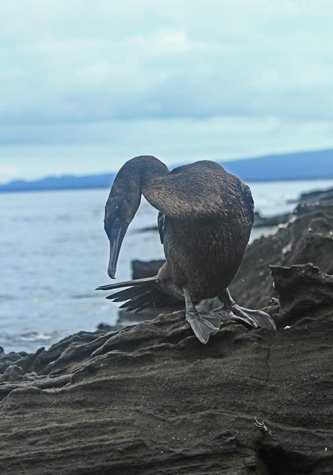The youngest and most active volcanoes of the archipelago are located in the western portion, and Isabela is the largest. There is lots to see here, so we will spend all day at different sites along its coast. Our first location of the day is called Urbina Bay, where our guests can chose between a short or long hike, both of which offer good opportunities for wildlife sightings, including large land iguanas and occasionally even giant tortoises.
Land birds are everywhere here, from Darwin’s finches, Galapagos hawks, warblers and Galapagos mockingbirds to some waders and sea birds, like pelicans and the unique flightless cormorants.
Another interesting feature of the area is a consequence of the 1954 uplift, which caused the elevation of the marine bottom by 12 feet over an area of about 5 miles. During the action, a great number of marine creatures like sea turtles, sea urchins, lobster, sharks and many more were left high and dry, and can still be seen as you walk through the inland trail, which has been colonized recently by vegetation of different sorts. An area of large coral heads can be found here, quite a distance away from the water, and now vegetation grows on it.
After a delicious Ecuadorian lunch and a mandatory siesta, we prepared for the afternoon activities at another location on Isabela called Tagus Cove, formerly visited by naturalist Charles Darwin. Some started early with a kayaking excursion along the shore of a tuff formation, where we regularly find sea birds like penguins and cormorants resting or nesting.
Some of our guests chose to go snorkeling off of the Zodiacs along the coastline. Here, green sea turtles are abundant and incredibly friendly, and penguins are also known to come very close as they follow small fish. Cormorants do the same, and sometimes they are attracted to our snorkeling gear, and try to take it off of us to include as part of their nests! This session in the water was just amazing.
The adventure continued for some with a power hike to a small elevation, from where you can see a salt water lake located in an old crater, mostly made of ash and surrounded by local vegetation. This water is twice as salty as ocean water. Others decided to take a Zodiac ride to look for the amazing animals that usually hang out on the rocks and swim close the shore, where it is possible to see and take pictures of them easily.
Another incredible day in the Galapagos.







